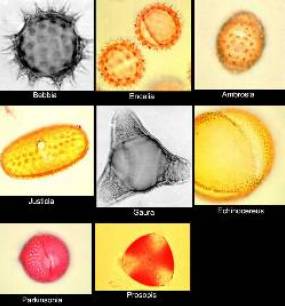
Reference pollen collection. Pollen grains differ in shape numbers of pores, surface sculpture, spination, bladders, etc. Sweetbush (Bebbia juncea) and brittlebush (Encelia farinosa) have grains with long spines typical of many composites while triangleleaf bursage (Ambrosia deltoidea) has short spines. Other interesting pollen grains include red justicia/rama del toro (Justicia candicans), lizard tail (Gaura parviflora), and claret cup cactus (Echinocereus triglochidiatus). The grains of the caesalpinoid blue palo verde (Parkinsonia florida) and the mimosoid velvet mesquite (Prosopis velutina) legumes are quite different. Photos: b&w: M. C. Peñalba; color: M. K. O’Rourke. |
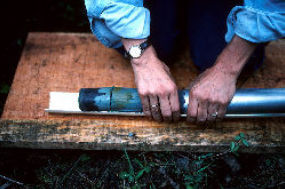
Cristina Peñalba is extruding the pollen-bearing sediment core from El Caballito Blanco spring. The core is carefully measured and described before being cut into stratigraphic samples. Pollen grains and moss and fern spores can be preserved for long periods in sediments because the protein coat of pollen grains is very resistant to chemical degradation. After treating sediments with strong acids and bases, only pollen remains. Photo: T. R. Van Devender. |
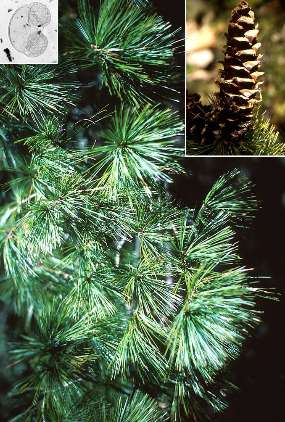
Fossil pollen documented a pine-oak forest for at least the last 8600 years from the Ciénega de Camilo in easternmost Sonora. Pollen grains of a white pine (inset upper left) were identified in sediments from the peat mound deposits although it no longer occurs in the local area.. Today the southwestern white pine (Pinus strobiformis) with its large cone or piñon (inset upper right) grows in higher elevation forests on the Mesa del Campanero west of Yécora. Photos: pollen by C. Peñalba G.; others T. R. Van Devender. |
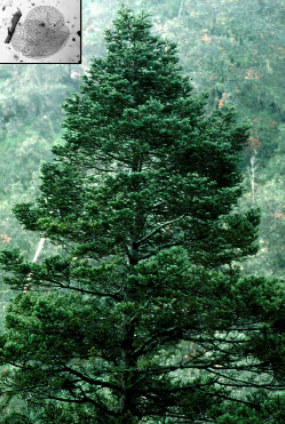
From 8600 to 6000 years ago there was a mixed-conifer forest in the Ciénega de Camilo dominated by pines with fir (Abies) present (as revealed by fossil pollen, inset); oaks were less common than today. The modern analog for this paleoforest is in the deep canyon on the southwest and west edges of the Mesa del Campanero where there are isolated stands of southwestern white pine and Durango fir (Abies durangensis). Pollen photo from C. Peñalba G.; other by T. R. Van Devender from Mesa del Campanero. |
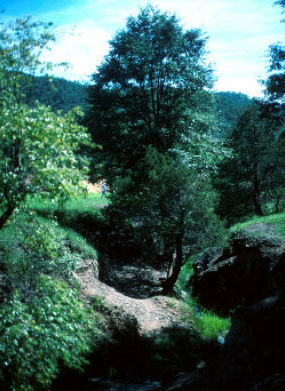
Organic sediments in the El Caballito Blanco spring at El Kípor east of Maycoba, Sonora span the last 34,000 years. The rich pollen in the sediments is yielding the first ice age record of the pine-oak forests of the Sierra Madre Occidental. Photo: T. R. Van Devender. |
|
